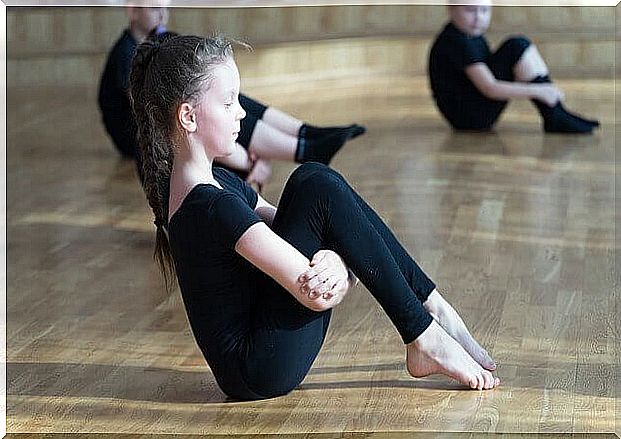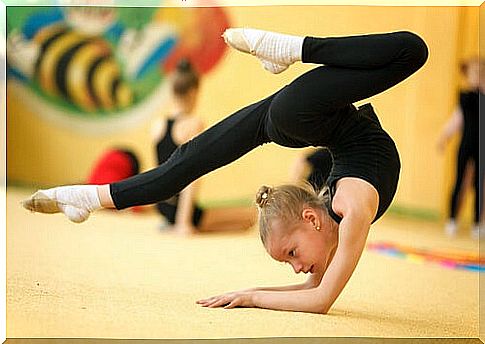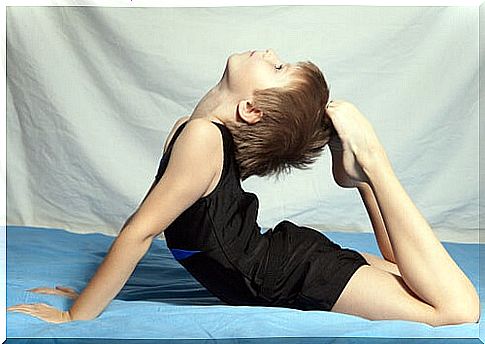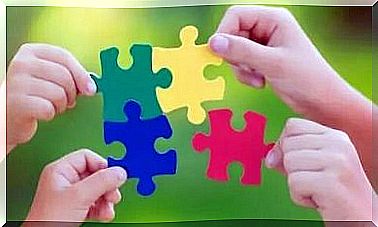Benefits Of Rhythmic Gymnastics For Children

Rhythmic gymnastics is an activity that combines movements of dance and ballet. It also includes acrobatics, and uses instruments such as ribbons, balls and rings.
Although many people doubt its benefits through childhood, there are many benefits of rhythmic gymnastics for children.
While it may not seem like a favorite choice when choosing a sport for children, you should offer rhythmic gymnastics as an option.
In general, it is recommended that children over the age of 6 begin this discipline. If they do so before this age, they can hardly perform the basic actions required in this sport.
At the age of 6, children begin to develop their spatial orientation. They also already have better control over their body.
Rhythmic gymnastics is also an activity that is suitable for both boys and girls, although most girls practice it worldwide. It can be done individually or collectively, both in duets, trios, quartets or quintets.
Benefits of rhythmic gymnastics for children
Rhythmic gymnastics is a demanding activity that has the following benefits for children who practice it:
1. Improves physical condition and flexibility
If you have seen the movements performed in rhythmic gymnastics, you will surely understand what we mean. This discipline requires difficult movements, which test the elasticity of children. Furthermore, this sport prevents the flexibility from diminishing as the years go by.
Furthermore, the stability that this sport requires will make their muscles stronger. It also helps burn calories, and promotes metabolism, appetite and rest.

2. Connects children with their body and surroundings
In addition to the physical requirements, rhythmic gymnastics also places great emphasis on the aesthetic. This means that children are perfectly aware of the movements they perform. They are also perfectly placed in time and space.
With this, it can also correct a bad posture and, as a consequence, help to avoid injuries. Their balance will also benefit from playing this sport.
Rhythmic gymnastics increases concentration
The benefits of rhythmic gymnastics are not just physical. By being a sport that requires one to follow a certain schedule in advance, the child cannot neglect what they are doing.
As a consequence, they will work with their memory and attention. Without a doubt, it is a form of exercise that puts the whole body to work.
4. Stimulates coordination
Another element that is present in rhythmic gymnastics is music. Therefore, in addition to sharpening hearing, children will be in a situation that requires them to coordinate their movements with the music.
5. Improves their quality of life
The benefits of rhythmic gymnastics, as we have described above, will make the children have a better mood. In addition to being active, the practice of this discipline will help them develop their own proprioceptive sense. It also builds self-esteem and self-confidence.
In addition, they begin to interact with peers and educators. They will learn the value of collaboration, mutual support and fun in groups.

Votes against rhythmic gymnastics
In addition to the benefits, we must also consider the arguments against this activity. Although the general rule is that one can start after the age of 4, many say, they are still very young.
The main debate has to do with the demands that this sport places on young children. It includes both the physical demands, with complicated and risky movements, as well as the mental component: remember that children must be able to remember and synchronize complex steps.
It has also been linked to physical problems, such as delay in the first menstrual period. Studies, conducted on elite athletes in previous decades, have confirmed these effects of rhythmic gymnastics. This is in addition to the possible injuries that all kinds of sports can cause.
Furthermore, the fact of competing and presenting to a jury that has to evaluate can be very tough. Much more, of course, if they do not get the score or feedback they want.
However, everything will depend on the requirements that the children experience when performing this sport. As with any other form of physical activity in childhood, the playful aspect, as well as the emphasis on the proper development of the child’s skills, should be the predominant one.









